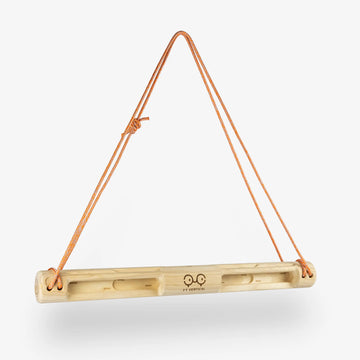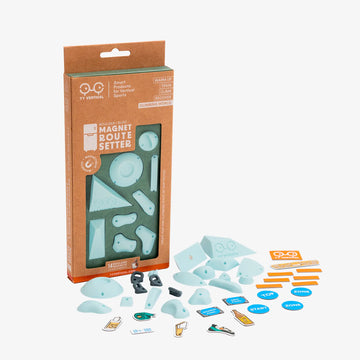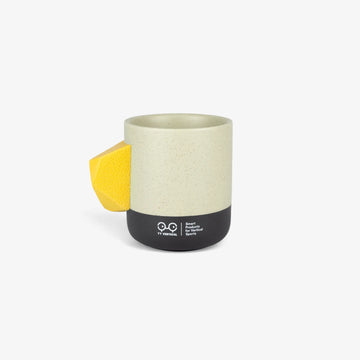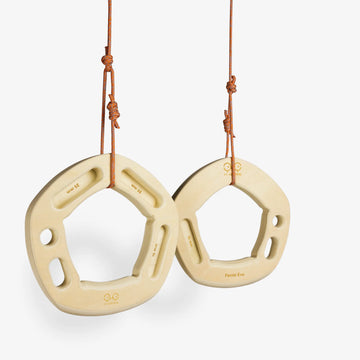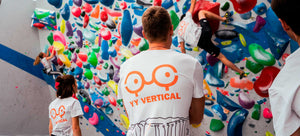
How to train with a climbing hangboard ?
- 6 min reading
- Train
- Tutorials

In this article produced in partnership with PC Training, YY Vertical explains how to make the most of your VerticalBoard climbing traininghangboard to gain strength and progress.
If you're passionate about climbing and want to progress, you've come to the right place.
This article covers the following topics:
- Warming up to avoid injury
- Finger strength, to hold holds with ease
- Arm strength, for success in demanding movements
- Le gainage, to control your body during climbs
(In this article, we'll focus specifically on using the VerticalBoard for training, but the general principles can be applied to other similar climbing hangboards ).
VERTICALBOARD ONE | VERTICALBOARD EVO | VERTICALBOARD FIRST | VERTICALBOARD LIGHT
Warm-up
Why warm up before training?
Warming up has a number of physiological benefits, including raising muscle temperature to improve contractions and the mechanical properties of tendons. It also mobilizes joints to promote the production of synovial fluid, which lubricates the joints. Warming-up also has sensory and technical aspects that improve the quality of climbing movements.
How do I warm up?
The specific warm-up phase takes place on the climbing hangboard , where the intensity of suspension and pull-ups is gradually increased. The aim is to start with easy exercises and gradually increase the intensity of bouldering and pulling until you're ready for the workout.
We recommend starting with gentle mobilizations of fingers, wrists, elbows and shoulders, then gradually increasing the intensity and amplitude of movements.
It can be beneficial to use elastic bands to obtain even resistance and to vary the contraction regime during warm-up.
See PC Training's video on how to warm up on VerticalBoard climbing hangboards :
VERTICALBOARD ONE | VERTICALBOARD EVO | VERTICALBOARD FIRST | VERTICALBOARD LIGHT
Finger strength
What types of finger apprehension are there?
There are three classic types of grip: semi-arched, stretched and arched with the thumb. Suspensions should vary between semi-arched and arched, with a distribution of two-thirds semi-arched and one-third arched in training.
How do the fingers work?
The factors influencing finger strength are nervous factors, muscle architecture, tendon stiffness and energetic qualities. To develop finger strength, you need to work at high or very high intensity, choosing appropriate grips.
One thing's for sure: finger strength is crucial for holding on to holds and staying on the wall.
Finger training on climbing hangboard
For strength training, PC Training offers a method called EMOM ("Every Minute On the Minute"), where the exercise is performed with a start every minute. The suspension time and number of repetitions are fixed to keep within the strength range. It's essential to choose a grip that requires significant effort, but without risking opening the fingers. Adding ballast to a controlled exercise such as the hangboard is relevant to the development of strength, as long as the training is progressive.
In practice, the aim is to perform 8 seconds of suspension followed by 52 seconds of rest, for 4 to 10 minutes (4 to 10 repetitions). Once 10 repetitions have been achieved on one grip or with a certain amount of ballast, the intensity can be increased by doing fewer repetitions or using other types of grip (flat, bidoigt, mono, or micro-grips) according to individual needs.
See PC Training's video on how to train your fingers on VerticalBoard climbing hangboards :
VERTICALBOARD ONE | VERTICALBOARD EVO | VERTICALBOARD FIRST | VERTICALBOARD LIGHT
Arm strength
What factors affect arm strength?
Arm strength is a crucial element in climbing performance, and to improve it, both nervous and structural factors must be taken into account. Nerve factors include muscle activation and muscle fiber coordination, while structural factors concern muscle size and architecture.
Before embarking on this workout, make sure you're fresh and warmed up.
Arm training on climbing hangboard
For this specific workout, the aim is to find a configuration where it's possible to perform between 4 and 8 repetitions. This range will enable you to work on both the nervous and structural factors of the muscles.
When doing pull-ups, it's essential to have full amplitude, i.e. to start from a position of straight arms and bring your chin above your hands on each repetition. Controlling the descent is just as important.
PC Training offers you five intensity levels for pull-ups:
- Two-armed pull with elastic band.
- Two-arm bodyweight pull.
- Weighted two-arm pull.
- One-armed pull with elastic band.
- One-arm bodyweight pull (expert level).
Don't hesitate to adjust the intensity by choosing the right elastic band for the unloaded variations. Make sure you maintain correct form during each repetition, whatever the intensity level.
Ideally, you should do three to six sets, with about 3 minutes recovery time between each one. You can even take advantage of these recovery times to do some lower-body stretching or body-support work.
See PC Training's video on how to do it right train your arms on VerticalBoard climbing hangboards :
VERTICALBOARD ONE | VERTICALBOARD EVO | VERTICALBOARD FIRST | VERTICALBOARD LIGHT
Sheathing
What is sheathing and why is it important?
Sheathing is the ability to control the position and movements of your trunk and pelvis to transmit forces efficiently between your upper and lower limbs during the various phases of climbing movement.
Sheathing is three-dimensional, which means you need to train all its components: flexion, extension, rotation and inclination.
How can I improve my posture with climbing hangboards ?
To improve muscle gain, you need to focus on strength training, using exercise variations that require significant effort. To optimize strength gains, you need to take complete rest periods between sets.
Here are two exercises to perform on the hangboard to work on both flexion and rotation:
-
Knee-ups: Perform this exercise keeping your back straight and avoiding hollowing out. Find a variation that allows you to do 5 to 6 repetitions.
-
The windshield wiper: This movement combines flexion and rotation. Adapt the amplitude, straighten or bend the legs, and adjust the speed according to your level.
When training, follow the classic modalities of strength development. Do 5 to 6 repetitions, rest for 1 minute, then repeat 5 to 6 repetitions. Take another minute's rest before doing a final set of repetitions.
You can do between 2 and 5 sets, with 5 minutes' rest between each set.
Watch the PC Training video which explains everything you need to know train your arms on VerticalBoard climbing hangboards :








